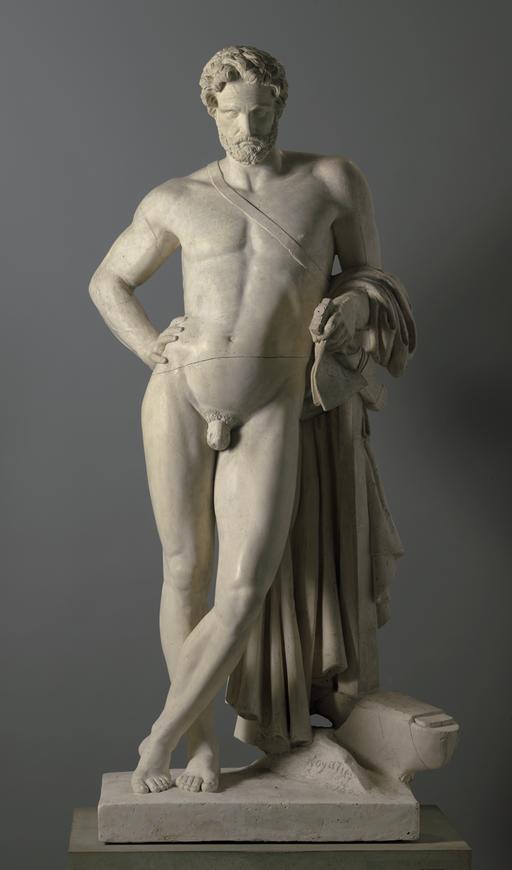In ancient Rome, it was customary, in times of serious crisis, to entrust the reins of power to a dictator. At that time, the word did not have the negative connotation it has today. Certainly, the dictator had absolute power, but his mission was above all to save democracy.
Thus, in 458 BC, supreme command was entrusted to Lucius Quinctius Cincinnatus, a farmer who became consul in 460 BC and was renowned for his integrity and moral virtues. Rome was indeed struggling with the Aequi people, who lived northeast of Rome and were attempting to invade Roman territory.
If we look at Foyatier's sculpture, we see an elderly Cincinnatus with a serious expression. He is holding his appointment as dictator in his left hand. His arm is also resting on a tool, which is in fact a plow. According to legend, the desperate senators came to find Cincinnatus while he was working in his fields. Foyatier chose precisely this moment when the hero is interrupted in his work; he even looks angry!
The story ended well; Cincinnatus accepted the mission and crushed the enemy troops. It is even said that immediately after the victory, the modest hero returned to his beloved fields...
Detail: The plaster cast in Lille is a rough draft prior to the creation of a marble version. The latter is still in place in the Tuileries Garden in Paris.

In ancient Rome, it was customary, in times of serious crisis, to entrust the reins of power to a dictator. At that time, the word did not have the negative connotation it has today. Certainly, the dictator had absolute power, but his mission was above all to save democracy.
Thus, in 458 BC, supreme command was entrusted to Lucius Quinctius Cincinnatus, a farmer who became consul in 460 BC and was renowned for his integrity and moral virtues. Rome was indeed struggling with the Aequi people, who lived northeast of Rome and were attempting to invade Roman territory.
If we look at Foyatier's sculpture, we see an elderly Cincinnatus with a serious expression. He is holding his appointment as dictator in his left hand. His arm is also resting on a tool, which is in fact a plow. According to legend, the desperate senators came to find Cincinnatus while he was working in his fields. Foyatier chose precisely this moment when the hero is interrupted in his work; he even looks angry!
The story ended well; Cincinnatus accepted the mission and crushed the enemy troops. It is even said that immediately after the victory, the modest hero returned to his beloved fields...
Detail: The plaster cast in Lille is a rough draft prior to the creation of a marble version. The latter is still in place in the Tuileries Garden in Paris.